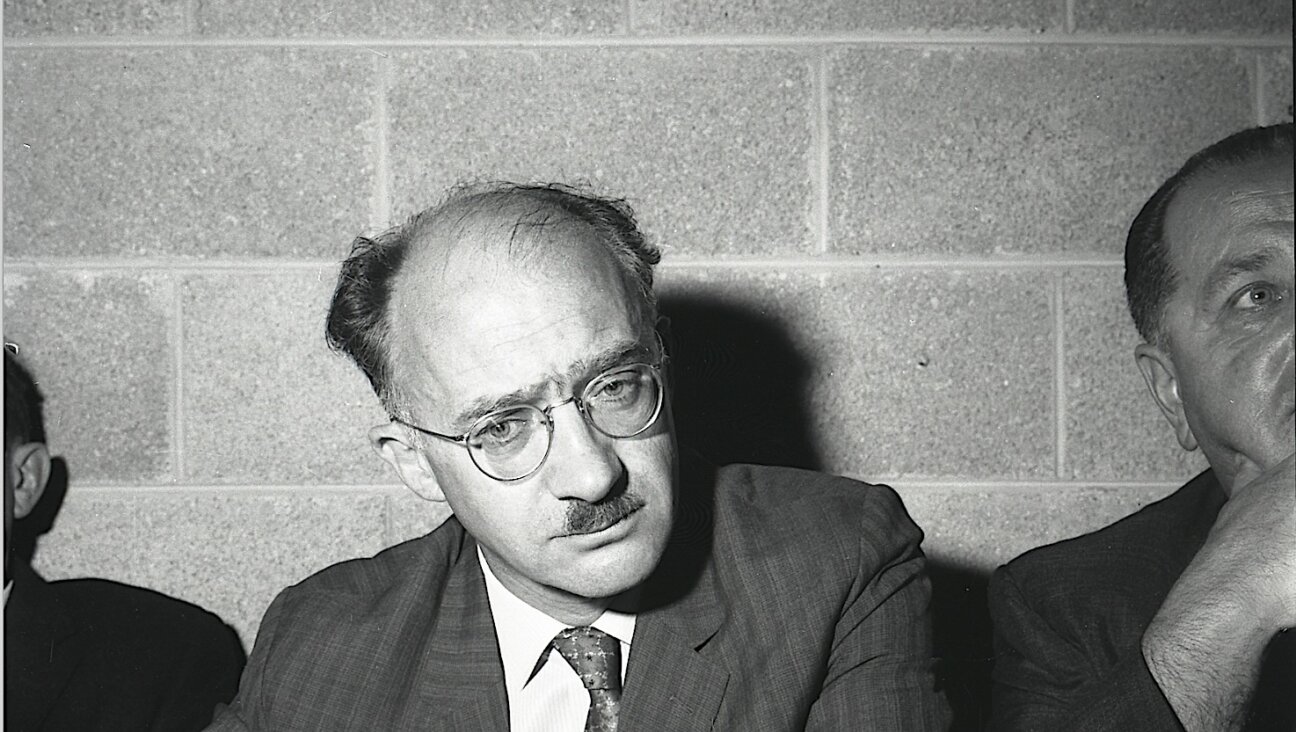Jews’ Houses Ain’t Castles: They’re Shuls

A Perennial Question: The Alt-Neu Synagogue in Prague has always been a shul but not always ?Old-New,? though stories differ on its original name. Image by SAMUEL GRUBER
Chuck Meyer of Ewing, N.J., writes to ask why a Jewish house of worship is known as a synagogue.
The word “synagogue” is originally a Greek one first found in the New Testament. It comes from the verb synagein, “to bring together or gather,” and is a translation of the Hebrew bet-k’neset, “a house [or place] of gathering.” Synagogues were called this in rabbinic Hebrew because, as the largest buildings in most of the towns and villages of ancient Palestine, they served not only for prayer, but also as community centers in which Jews assembled for various purposes.
Therefore, synagogē was not initially a Jewish word. There is no evidence that Jews in antiquity ever used it when conversing among themselves, for it does not occur anywhere in the vast corpus of talmudic literature, in which there are a large number of Greek borrowings. This would seem to be true even of those places in the Eastern Mediterranean world in which there were large Greek-speaking Jewish communities, such as Alexandria, where — on the evidence of the writings of the first-century C.E. Jewish philosopher Philo — Jews preferred the word proseukhē, “[a house of] prayer.” Synagogē, or, in Western Mediterranean countries, its Latin form of synagoga, seems to have been used by Jews only in their contacts with gentiles.
Besides bet-k’neset, classical Hebrew has another term for synagogue: bet-midrash or “study house,” for inasmuch as Jews commonly studied and prayed in the same places, a house of study was almost always a synagogue, too. In the Latin-speaking West, bet-midrash supplanted bet-k’neset in everyday speech and was translated by Jews into Latin as schola, a word that ultimately gives us both our English “school” and the oldest of Yiddish words for synagogue, shul. In later Yiddish, two more words for synagogue came into existence: shtibl, from Yiddish shtub and German Stube, “a room,” and kloyz, from German Klause, “a room or enclosed space.”
The Yiddish of Eastern Europe thus had four different ways of referring to a synagogue, each with its own shade of meaning. Shul was a general term that could denote any synagogue. A bes-medresh was a shul with a library of religious texts sufficient for serving the entire community for study, and so it was often a large or main synagogue. A kloyz and a shtibl were small synagogues that were sometimes prayed in by specific groups, whether defined by occupation (for example, the tailors’ kloyz, the shoemakers’ kloyz), geographical origin (a galitzianer shtibl, a litvisher shtibl) or religious orientation (a kh’sidishe kloyz, a misnagdish shtibl). And to this, in early 19th-century Germany, was added Tempel, a Reform synagogue frequently housed in a grand building and boasting an organ and choir.
Elsewhere in the Jewish world, bet-k’neset dropped out of spoken use, too, though in written Hebrew it never ceased to be the standard word for a synagogue. The only vernaculars in which traces of it survived were the Aramaic spoken by some of the Jews of Kurdistan, who called a synagogue a k’neshta, and the Arabic of Middle Eastern Muslims and Christians, in which a synagogue is a k’nis. The Arabic-speaking Jews of North Africa, Egypt, Syria and Iraq said sla, from Arabic salaa, “prayer.” Among the Greek-speaking Jews of the Byzantine Empire and, in later times, the small Jewish community of Macedonia, proseukhē continued to be the accepted term, while the Ladino-speaking Jews of the rest of Greece, Turkey and the Balkans said kal, a word deriving from Hebrew kahal, “congregation.” In Israeli Hebrew, on the other hand, bet-k’neset has made a colloquial comeback and is the only word in use for “synagogue.”
As for “synagogue” itself, some form of which signifies a Jewish place of worship in nearly all the languages of Europe, only in medieval Spain did premodern Jews appropriate the word for themselves. Shortened in medieval Spanish to sinoga (and in Portuguese to eznoga), it was brought to northern Morocco by Jews expelled from Spain in 1492, and survived there as snoga or esnoga. Even in contemporary America, the use of “synagogue” among Jews is at best partial. Reform Jews will generally tell you that they go to temple. Orthodox Jews commonly go to shul. Only Conservative Jews tend to go to synagogue — and they, too, frequently say shul (although never “temple”) instead.
This isn’t because Jews object to the New Testament roots of “synagogue,” of which few of them are even aware; however, there remains something about the word that does not sound or feel terribly Jewish, as if its Christian origins nevertheless show through. It’s fine for use when talking to non-Jews — not even an Orthodox Jew would be likely to tell a non-Jewish acquaintance that his rabbi gave an interesting sermon “in shul” — but it’s a bit cold and formal when used by one Jew in talking to another. “Shul” has a warm hominess; “synagogue” does not. Indeed it never did, which is why Jews have managed over the centuries to find so many other words by which to call their synagogues.
Questions for Philologos can be sent to [email protected]
















